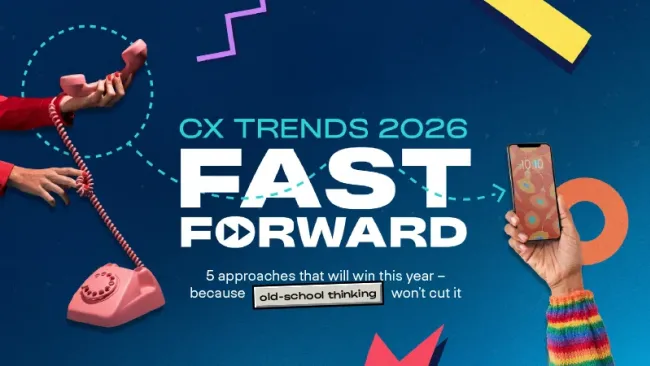The era when companies had at least partial control over what was publicly said about them is long over. Instead, the power has shifted to the customer, who has the tools at his fingertips to tell the masses about his experience with various organizations. And he uses those tools frequently. According to The Realtime Report, there are currently about 250 million tweets per day, with 25 percent of Tweets mentioning brands. Facebook reports that it has more than 800 million users, and that "more than 50 percent of its active users log in on any given day."
As more customers increasingly interact with each other in the social sphere, often the topic of those conversations is the companies they do business with, the experiences they have with those organizations, and the pros and cons of using their products and services. Whether their comments are positive or negative, companies have no choice but to interact with their customers online, or risk appearing indifferent.
This new phenomenon is making it all the more important for companies to become social organizations, engaging with their customers and prospects in the space where they are already interacting, reaching out to them over the channels that they prefer, and making sure that no query goes unanswered. So, what is a "social organization"? From a business perspective a social organization is one that embraces social media and the associated customer interactions as part of its overall customer and marketing strategy.
Transforming from a company that simply responds to the occasional tweet from an irate customer or posts the occasional coupon on Facebook to a truly social organization requires a multipronged approach that will ingrain social elements within the company's overall business strategy. There are five steps to getting there, as well as several pitfalls to avoid. It begins with defining objectives and metrics, adds gaining organizational buy-in and building social into the company structure, and continues with staying relevant. It's an ongoing process that must evolve as social media itself evolves.
5 steps to success
1. Outline the objectives
Social media offers myriad opportunities to build customer engagement, but companies need to be clear about what they want to accomplish. The goal may be to improve brand recognition, acquire or retain customers, lower service costs, collect and respond to customer feedback, or gather customer ideas for product innovation. It's possible that an organization may have several goals, but it's essential to prioritize them to determine the resources necessary to accomplish each.
One of the biggest focus areas for companies today is social listening. Businesses that don't listen to social conversations are surrendering part of the natural market feedback that exists and could impact their sales results. For example, there's increasing evidence that Twitter is becoming the first line of complaint for many customers. Organizations that aren't listening to the Twitter stream and monitoring for mentions of their brand or products won't hear the complaints—yet millions of customers and prospects will.
But listening as an objective itself is too broad and simplistic. Businesses need to determine what they're listening for (e.g., complaints, trends, competitive information) and how they're going to respond. In other words, social goals should be specific and measurable. If an organization is listening for complaints, for example, it needs a plan for how it will act on those complaints based on its reasons for doing so: Is the objective to immediately resolve issues presented by upset customers, track complaints for trends in customer sentiment, avoid a negative word-of-mouth nightmare? All of the above?
Those detailed objectives will help to determine the appropriate processes, resources, and metrics necessary to meet them.
2. Determine which social channel to use
Once the objectives have been established, companies need to determine which channels they want to use for their social activity. Is it a social network like Facebook or LinkedIn, their own blog or a microblog like Twitter, a location-based service like FourSquare, their own website or online customer community, or some combination of the many options? The decision should be based not only on the organization's social objectives, but also on where its customers spend their time. There may not be a compelling reason to invest in, say, a closed customer community if a broader community already exists. For instance, an airline may want to have an invitation-only customer community for its elite travelers, but not for its broader group of frequent fliers, who are likely already interacting on such sites as Trip Advisor.
Many organizations use a mix of social channels, but may focus most heavily on one or two. Best Buy, for example, is active on Twitter. Its Twelpforce page has more than 38,000 followers and quickly responds to all customer inquiries noted there. Additionally, however, the retailer has a highly interactive online community that averages 600,000 visitors and 20,000 messages each quarter. A dedicated team of nearly 20 community responders hosts the site. According to Gina Debogovich, Best Buy's senior manager of communities and social media strategist, more than 60 percent of forum posts are product discussions, something the organization sees as an opportunity to increase and influence customer spending.
Similarly, Starbucks developed its own customer community—www.mystarbucksidea.com—to enable its customers to share their ideas for new products, service improvements, and community service or social responsibility programs. The site encourages interaction among customers, who vote yea or nay on other members' ideas. Additionally, Starbucks closes the loop by showing the progress of top ideas (e.g., under review, in the works, launched). One of the thousands of ideas that customers suggested was a larger cup for iced drinks, which triggered the birth of the 31-ounce Trenta cup.
3. Rally the organization
This step involves two focus areas: determining who's in charge and gaining buy-in across the organization.
First, companies must decide which department will "own" the social media strategy. The decision may be based on such issues as an organization's primary objective for social media and its organizational structure. As a result, the "owner" of the company's social media efforts may be one department, for example, marketing, public relations, or customer service. Or it may be a cross-functional team from across those areas that has social media oversight. It may also be a dedicated social media team with direct reporting to, say, the COO.
Once the ownership is in place, it's time to build employee engagement around the new approach. For an organization to become truly social, employees need to be on board with that approach and prepared to help execute on it. As with all organizational change, communication is essential. Senior leadership needs to communicate the details, importance, and value of the approach to all of their employees—as well as explain how it impacts each person's role, so that everybody knows what to do to contribute to the social strategy and its success.
An essential element of the social organization is a set of social media guidelines. It should explain the rules and responsibilities for all employees' involvement in social channels, especially those who are dedicated solely to social interactions with customers.
Additionally, employees who interact with customers on social media should be adept at using these channels, and understand the various nuances of each. Ideally, the employees who will be monitoring social media channels should have appropriate traits. The most important is an ability to empathize with customers. Also, they should be fluent in both social lingo and the language of customer service, and be able to think quickly and strategically to determine the best course of action based on various situations they may encounter online.
Finally, company leadership needs to determine how they will staff the social media team in terms of time spent online. Part of a company's transition to becoming a social organization is the prioritization of real-time responses to customer comments. Social media is not a 9-to-5 affair, but a continuous, 24/7 business, which means that round-the-clock monitoring is imperative. Some organizations, however, don't have the staffing available for that level of interaction. In some cases they'll note hours of availability on the social sites; in other cases they may ask employees to volunteer their time to respond to urgent issues. Other companies underestimate the resources required to have an adequate social media presence, leaving their social presence at risk. It is not unheard of that a large company with thousands of employees will put two people in charge of social channels, but having an inadequate set-up will do more harm than good.
4. Track progress
Companies want to see a return on investment on all their ventures and social media is no different. Thus, social organizations have to outline how they will track the progress of their social strategy. Common metrics include number of friends/followers, volume of click-throughs to promotions or an e-commerce site, recommendations and referrals, and sentiment of reviews. Most CMOs are primarily concerned with revenue, churn, and acquisition rates. So, while a social media director may have a target of 15,000 Twitter followers, how does that translate into a financial metric that the CMO cares about?
Additionally, the metrics should link to an organization's objectives for social media. For example, one goal may be to resolve customer issues in social so they don't escalate to the contact center. If so, there must be specific metrics around that goal, like the percentage of issues to contain in social channels.
Some companies overestimate the impact that social media will have on their revenue. While having 50,000 customers "liking" them on Facebook may seem like a success, it may not translate to real engagement or monetary value. Do these "likes" mean that these followers are truly engaged with the company, or have they forgotten that they even "liked" it? Did they only click "like" to receive a special offer, never to return? This scenario highlights the importance of having sound metrics supporting a social organization's strategy, giving those companies a truer picture of the impact of the medium.
5. Be deliberate and relevant
Finally, companies need to make sure that what they publish is relevant to their customers. Depending on the company's product and service offerings, this content could include weekly specials (e.g., discounted airfares), new product releases (e.g., seasonal offerings), service updates (e.g., newly resolved problems), and many others. The company should publish new material regularly and respond quickly to any comments. Having a social presence and not using it can hurt a brand's image.
Additionally, companies striving to be more social have to let go of the misconception that they can be in charge. Social media is not another channel for talking at customers, but rather one for listening, responding, and reaching out to them to encourage interaction. Companies should develop a specific social media strategy based on the IMPACT framework: Ignore, Monitor, Participate, Activate, Correct, and Track.
- Ignore: Respond only to negative comments that require action and ignore negative opinions, because that's exactly what they are: opinions
- Monitor: Follow all relevant touchpoints and collect feedback
- Participate: Proactively join conversations, promote others, and extend the brand
- Activate: Develop new ways of interacting…or someone else will
- Correct: Actively correct factually inaccurate statements to avoid confusion
- Track: Develop a set of social media KPIs and keywords to track on a daily basis
Conclusion
The focus on becoming a social organization has been swiftly increasing in many organizations as more and more employees personally adopt social media channel interactions as part of their daily life. However, the pace of conversation and diversity of channels present significant challenges for organizations. As Peppers & Rogers Group Founding Partner Don Peppers puts it, social media is a free-flowing, 24/7 conversation in which millions of people can participate. It's like a continuous survey that is available for companies to harness or an extension of the voice of the customer. The only question is whether companies choose to observe it and take action or not. Businesses today that don't proactively interact with customers in social media—and that don't reinvent themselves as social organizations to handle those interactions in a considered, holistic manner—risk not only losing customers, but losing face.
















